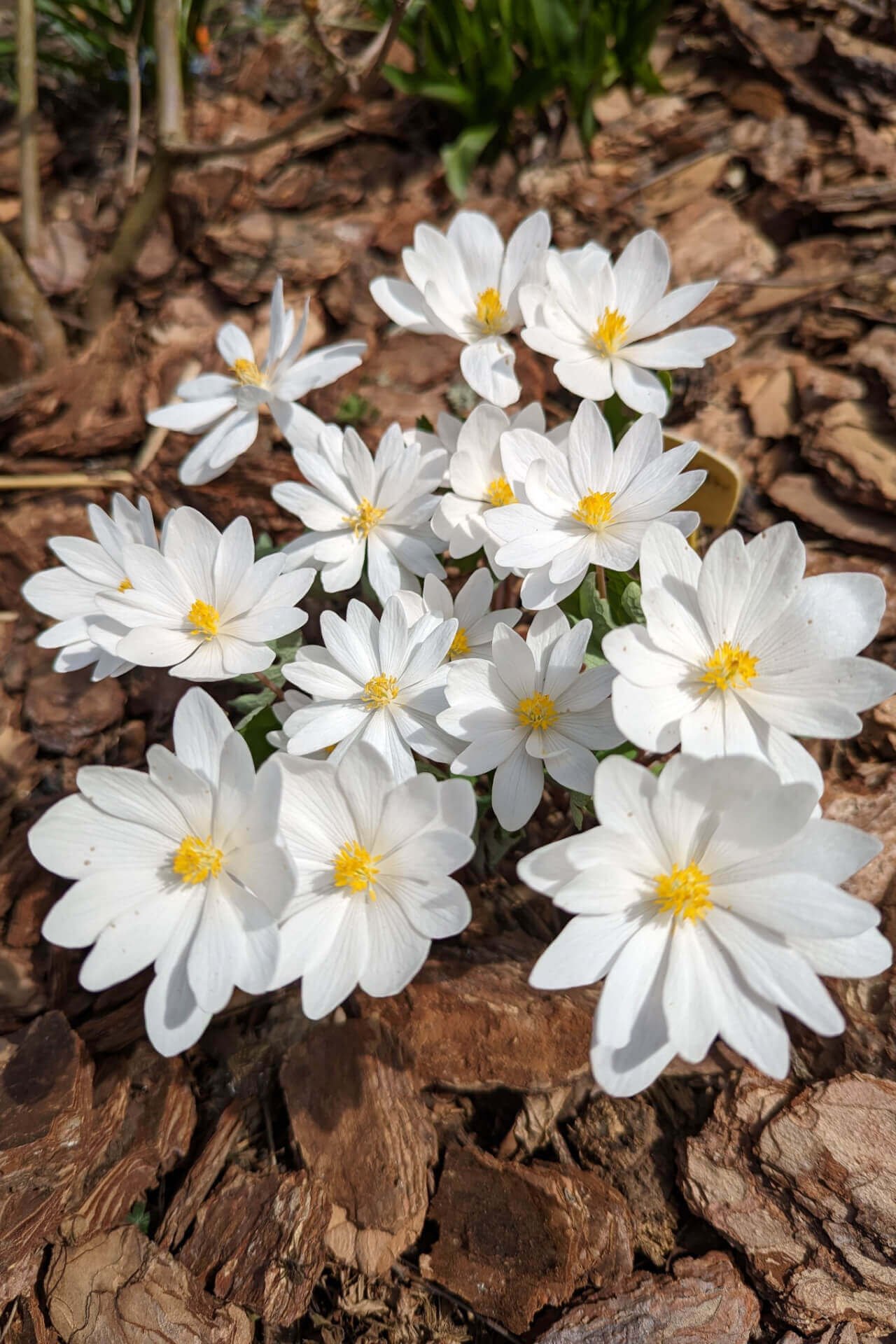The Blood Root plant, also known as Tetterwort, is an herbaceous perennial plant in eastern North America.
It grows in the areas between Canada and Florida all down the Appalachian mountain range. The bloodroot grows to a height 0f 20-50 cm. The plant has only one leaf that surrounds the stem. The flowers are white and bloom in the spring areas between March and May, often before the leaves appear. The flowers have large 8-12 petals and have different shapes depending on the subspecies.
The main use of Bloodroot is a decoration.
The plant's beautiful white flower is a prized possession for those who have them, as they are lovely. These flowers attract many different kinds of bees and butterflies, allowing better pollination of the surrounding plants. Deer are also attracted to these plants as they are an excellent food source for them in the early spring, making it a hit for wildlife watchers. These plants prefer shady, moist areas like stream banks and floodplains. That makes his plant a must-have for shady water gardens. After many years a colony of these plants will grow around the original area by using rhizomes, making them very useful in gradually taking an area over like a groundcover.
The bloodroot is also very poisonous. The extract from the plant attacks and kills the cells of animals and humans. The extract has been thought to be used for skin cancer at burning it away but only leaves scared skin sections. Another use for the bloodroot is in the dye, as it has been used for centuries to dye hair, baskets, clothes, and other items. Overall the plant is a must for water gardens and can improve the look of any garden.
The Benefits of Bloodroot
Bloodroot (Sanguinaria canadensis) is a perennial in the eastern North American woodlands. You can identify the Bloodroot through its delicate white petals and the red-orange sap that emerges from the rhizome when damaged. Various Indigenous communities have valued this vibrant sap for centuries because of its reputed medicinal benefits. Bloodroot research continues to develop but already attracts herbal practitioners and holistic health enthusiasts. This section outlines the typical benefits of Bloodroot while providing necessary information about its correct application.
Bloodroot stands out because it possesses properties that can improve skin health. Bloodroot extracts have historically been topical treatments for skin growths, warts, and other skin irregularities. The sap's active elements, such as sanguinarine, demonstrate antimicrobial and anti-inflammatory aspects, which could help alleviate specific skin conditions. External use of bloodroot-based salves and ointments reportedly assists in eliminating dead or abnormal tissue and improves skin appearance. Properly using Bloodroot requires professional medical consultation because incorrect application risks causing skin irritation or damage.
Bloodroot has attracted interest for potential benefits in oral health beyond its topical use applications. Natural oral care products employ sanguinarine because it allegedly fights bacteria responsible for plaque formation. Sanguinarine prevents bacterial growth in the mouth, which helps control common dental issues like plaque formation and bad breath. Improved gum health and a fresher mouthfeel may result from this process. Commercial oral care products incorporating bloodroot derivatives utilize precise formulations. Professional supervision is required before using pure bloodroot extract instead of standard dental care products.
Native American communities and herbal practitioners have historically used Bloodroot to alleviate respiratory issues, including congestion and throat irritation. Bioactive components found in the plant show mild expectorant effects that help break down mucus and offer short-term relief. Traditional practices involving Bloodroot need to be approached cautiously. The potent alkaloids in Bloodroot can become toxic when misused or taken excessively. Before incorporating Bloodroot into treatments for respiratory issues or other internal conditions, you should seek advice from a professional healthcare provider.
Bloodroot is often examined for its possible ability to fight inflammation. Bloodroot supporters claim its extracts can regulate the body's inflammatory response during specific situations because inflammation influences numerous health conditions. Initial studies of sanguinarine show potential effectiveness against inflammation. Still, large-scale, scientifically validated studies are scarce. These findings present interesting possibilities but require cautious evaluation before endorsing herbal treatments.
The established benefits of Bloodroot related to skin health and oral hygiene, along with its potential anti-inflammatory properties, suggest that this herb could provide significant advantages when applied correctly. Responsible use of herbal preparations requires consulting an expert practitioner and understanding proper dosages and the plant's potency. Historical applications of Bloodroot in Indigenous communities demonstrate its importance in traditional herbal medicine, while ongoing research aims to reveal its applications in contemporary holistic health practices. People interested in Bloodroot's potential properties should consult medical professionals and follow evidence-based recommendations before adding it to their wellness practices.
Read more

Native and wildflowers are a treat to the eyes and can be easily spotted in meadows and valleys amidst the mountains. The beauty of these flowers surpasses everything in the surrounding area, and y...

Plants that control stagnant standing waterProper management of stagnant wetlands is critical if certain diseases such as malaria are to be controlled. Stagnant water provides a suitable breeding g...



